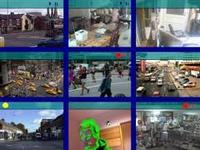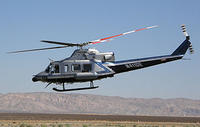-
Future of interrogation methods of terrorists may depend on election
On the campaign trail, Barack Obama and Mitt Romney have not said much about their approach to interrogating terrorists; but as the manner in which U.S. government agencies approach such interrogations, and the practices agents employ, may well depend on the outcome of next month’s election
-
-
DHS focus on suspicious activity at critical infrastructure facilities
Federal, state, and local law enforcement let people know that if theytake pictures or notes around monuments and critical infrastructure facilities, theycould be subject to an interrogation or an arrest; in addition to the See Something, Say Something awareness campaign, DHS also has broader initiatives such as the Buffer Zone Protection Program, which teach local police and security how to spot potential terrorist activities
-
-
Critics: U.S. not doing enough to combat domestic terrorism

The effectiveness of the U.S. campaign against al Qaeda and its affiliates may have reduced the threat of foreign terrorists launching attacks on targets in the United States, but the threat of terrorism the United States is facing has not been reduced owing to the rise in domestic terrorism
-
-
LAPD wants to know why you are taking these photos
If you live in Los Angeles and decide to take some pictures of a few monuments or public places to send to friends and family or for your own private collection, the Los Angeles Police Department (LAPD) may see you as a potential threat to public safety
-
-
German police wants to develop its own computer surveillance software
The Federal Police Office of Germany (also known as the BKA) is looking to hire software engineers who can develop computer surveillance technology for use by law enforcement and intelligence agencies in criminal investigations
-
-
Threat-recognition technology incorporates mind, machine

For soldiers operating in the field, the ability to detect threats from standoff distances can be life-saving; when advanced radar and drone coverage is not available, soldiers typically rely on their own vision to scan their surroundings; DARPA links human brainwaves, improved sensors, and cognitive algorithms to improve target detection
-
-
Law-enforcement agencies eager for Web-surveillance tools

Private technology firms are pitching software capable of analyzing large swaths of the Internet to local law enforcement looking for ways to stop the next mass shooting or domestic terrorist event before it happens; police departments hope the software will help them detect online information from terrorists, traffickers, pedophiles, and rioters
-
-
NYPD monitoring of Muslim communities did not produce a single terrorist lead

An NYPDunit which gathers information on Muslim communities and businesses in order to uncover links to terrorist plots has been unable to do so in six years of engaging in monitoring Muslim communities in New York and New Jersey
-
-
NYPD, Microsoft develop and deploy new surveillance system
The New York Police Department (NYPD) and Microsoft have teamed up to create the Domain Awareness System, which will analyze real-time safety data for use by NYPD investigators; the system will act as a communications hub which will allow a number of advanced counterterrorism systems to relay information to more than 1,000 people in the field
-
-
Domestic terrorism by members of extremist groups a serious threat: FBI
The FBI and other government law-enforcement agencies have been convinced for a while that terrorism from extremist domestic organizations is just as dangerous as terrorism from foreign organizations, but efforts by authorities to detect and pre-empt violent extremists have faced serious legal and political hurdles, including free speech guarantees and pushback from political lobbies suspicious of the government’s motives
-
-
ONR sensor and software suite tracks, hunts down more than 600 suspect boats
A new sensor and software suite sponsored by the Office of Naval Research recently returned from West Africa after helping partner nations track and identify target vessels of interest as part of an international maritime security operation
-
-
A third Bell 412 helicopter delivered to NYPD for counterterrorism missions

The NYPD dedicated many hours to designing the specifications of the department’s third Bell 412 to meet the diverse needs of the police department; one of the counterterrorism additions to the Bell 412 is a radiation detection system that can identify radiation signatures from an altitude of 200 feet in an effort to protect the city from nuclear bomb threats
-
-
Computer-based methodology for cultural intelligence and security
Cultural differences are a major challenge facing intelligence agencies, researchers from Israel and the United States have developed computer-based methodology to improve knowledge, apply data, and better decipher these nuances and biases
-
-
DHS forced to release list terms it monitors on social media
Following a Freedom of Information Act (FOIA) request by the Electronic Privacy Information center (EPIC), DHS was forced to release its 2011 Analyst’s Desktop Binder; the binder, among other things, contains a list of words DHS uses as triggers of suspicious communication when the department’s analysts monitor social media
-
-
Reason-based behavioral recognition system wins award
A reason-based behavioral recognition system for video surveillance developed by Houston, Texas-based BRS Labs wins an award at London’s Counter Terror Expo
-
- All
- Regional
- Water
- Biometrics
- Borders/Immig
- Business
- Cybersecurity
- Detection
- Disasters
- Government
- Infrastructure
- International
- Public health
- Public Safety
- Communication interoperabillity
- Emergency services
- Emergency medical services
- Fire
- First response
- IEDs
- Law Enforcement
- Law Enforcement Technology
- Military technology
- Nonlethal weapons
- Nuclear weapons
- Personal protection equipment
- Police
- Notification /alert systems
- Situational awareness
- Weapons systems
- Sci-Tech
- Sector Reports
- Surveillance
- Transportation
Advertising & Marketing: advertise@newswirepubs.com
Editorial: editor@newswirepubs.com
General: info@newswirepubs.com
2010-2011 © News Wire Publications, LLC News Wire Publications, LLC
220 Old Country Road | Suite 200 | Mineola | New York | 11501
Permissions and Policies
Editorial: editor@newswirepubs.com
General: info@newswirepubs.com
2010-2011 © News Wire Publications, LLC News Wire Publications, LLC
220 Old Country Road | Suite 200 | Mineola | New York | 11501
Permissions and Policies
